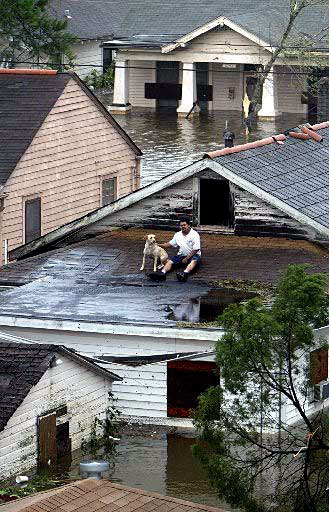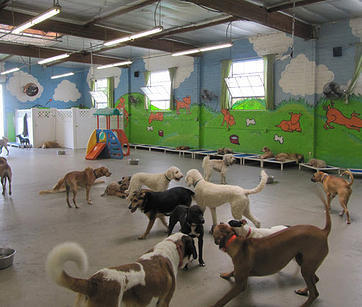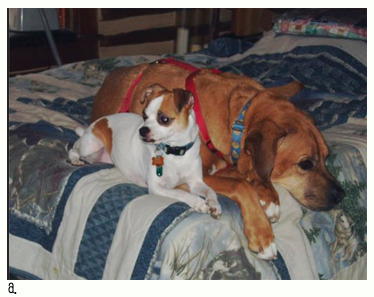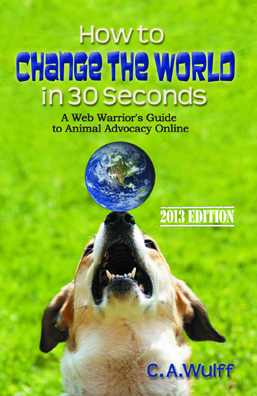Cayr Ariel Wulff's Blog, page 10
August 4, 2013
A Day in the Trenches
When I woke up today, the sun was shining (for a change) and the day held the promise of being a beautiful Sunday. But then I got an email that changed everything.
Eighteen hours beforehand, someone driving a white Ford Mustang in Canton had done something that would alter the course of my day, and that of many others. A man witnessed someone toss a little dog out of that car and over a bridge into a full culvert of running water at the corner of Whipple and Wise. The witness waved down a complete stranger so he could borrow her phone to call for help. The woman got down into the culvert and held the little dog’s head out of the water, but it was clear that he was suffering. The two good Samaritans called Jades Rescue in Canton for help, and Diane and Ed Aquino got directions and went down to see what they could do.
They rushed the young dog to Fulton ER clinic, and the little guy fought bravely for his life, but he was badly injured. The clinic diagnosed spinal trauma, punctured lungs, wounds and dehydration. He had also suffered head trauma that led to seizures. He was completely paralyzed from the mid-section down. The vets felt that the best course of action was to put him out of his suffering, and they euthanized him.

Do you recognize this dog?
When I read his story and saw his photo on the Internet, it was not clear to me if all of his injuries were the result of being thrown from the car, or if some of his injuries happened before that. But one thing was very, very clear.
This little dog was neutered. He looked like he’d been well taken care of, and he was wearing a collar. That meant that he was somebody’s pet. He wasn’t some piece of trash like a discarded candy wrapper or pop can. He was a living, breathing individual, and somebody had loved him enough at some point to take care of him and to buy him a collar. A purple collar; the color that is associated with animal rescue.
Although there are plenty of stories of abuse that involve pet owners abusing their own pets, this struck me as something different. I can’t imagine that a pet owner discarding their own pet in this way would leave a collar on him. So, what is his story? Was he stolen? Was he a pawn in some game between humans trying to hurt each other? Was someone looking for him? What had this little guy done to deserve this fate?
Nothing. That’s what.
There is nothing this dog could have done to deserve this. No pair of chewed shoes, no accident on the carpeting, no nip in response to fear, no hole dug in the yard, no amount of barking could have been egregious enough to warrant this horrifying treatment.
I don’t even know this dog’s name, but I love him. I know that in the last hours of his life, he met complete strangers who also loved him. Who wanted to help him. Who wanted him to feel safe. Who touched him with gentle hands.
Animal rescuers and advocates, we are part of an army. We fight abuse and cruelty on a million battlefields every day. Lots of times, the enemy wins. But we get up the next day and we do it again; and we do it again the day after that. We do it because animals like this little guy; they don’t stand a chance without us.
I don’t know this little guy’s name, but until I learn it, I will call him “Benny”, because he had a name and he deserves a name. And when I learn the name of the person who did this to him, I will spread that name far and wide – to the sheriff, to the police, to do not adopt lists, to prosecutors, and to judges – because anyone who can do this to another living being needs to be stopped.
Please share “Benny’s” story. Somebody knows who was driving that white Mustang. Somebody knows who Benny belonged to. Jades Rescue is offering a reward for information leading to an arrest. Call them with any information: 330.614.0300 or email: Jadesrescue@gmail.com

July 3, 2013
If my dogs were kids…
I’m going to make a little digression here from the things I usually blog about for a bit of good natured fun.
In the past, I’ve poked fun here at people who call their pets “furpeople”, because as much as I love my dogs, they are dogs, not people, and they are distinctly “other”.
This past weekend, something kind of weird happened to me, and I paid attention. I was just waking up, and my little rat terrier/chi mix, Maria, greeted me. That morning, it was as if I could clearly hear her voice saying “good morning mom.” It’s not the first time I’ve “heard” one of my dog’s voices. If Dillon could have spoken, I know exactly what his voice would have sounded like. But this weekend, when I “heard” Maria, it made me wonder what she would look like if she were a kid. That naturally led me to wonder about the other four dogs, too…and I found that it wasn’t that hard for me to picture each of them as human children.
A little creepy.
Maybe I’ve finally stepped over that line to Crazy Dog Lady.
So, anyway, just for fun – and because I’d been going through a bunch of comic book art that I have drawn or that I own, I decided to do a “family portrait” of my dogs — if they were kids.
Here is my drawing, for your enjoyment. I hope you will find it amusing, or charming.
Your comments are welcome…even the ones to tell me that I’m a kook, or to take me to task for anthropomorphizing my dogs to such a degree.

If my dogs were kids…
If you’ve read my book, Circling the Waggins, you may be able to figure out who’s who.
Maybe it’s the start of a whole new avenue of pet portraiture.

June 3, 2013
Shelter Reform: You Say Tornado, I Say Tornahdo
In the terrifying final scene of the 1978 film Invasion of the Body Snatchers, one of the characters meets up with Donald Sutherland’s character on the street. She calls out to him and walks toward him smiling, apparently relieved to see him, because  they had been the last two holdouts in their group of friends to escape becoming pod people. As she approaches him, neither she nor the audience is aware that Sutherland’s character has finally been snatched by the aliens. Sutherland points at her accusingly, and outs her with a chilling alien scream.
they had been the last two holdouts in their group of friends to escape becoming pod people. As she approaches him, neither she nor the audience is aware that Sutherland’s character has finally been snatched by the aliens. Sutherland points at her accusingly, and outs her with a chilling alien scream.
Wow…if this isn’t a perfect metaphor for the current state of animal rescue; never more so than when the conversation turns to shelter reform.
There is no denying the fact: the American shelter system is broken.
According to the HSUS and the ASPCA, it is estimated that between 5-8 million animals enter the shelter system every year, and of those, about 60% of dogs and 70% of cats are killed.
That’s in spite of all the people in animal rescue who work every day to save lives. It’s such a huge problem that there are multiple focuses to try to save as many pets as possible. There are rescues that pull pets from shelters, transporters that move pets from places where they will likely die to places where they have a better chance of being adopted, networkers who share urgent animals on social media, groups that help stray pets find their way back to their families, everybody is working toward a common goal: save lives. So why is there so much divisiveness when it comes to shelter reform?
You have to look at the different points on the spectrum. At each end are alienating batshit crazy extremists who see the situation in black-and-white terms only. At one end are the Pod people who can’t tolerate anybody in rescue who doesn’t accept their tenets of shelter reform in toto. They are the Sutherlands who point their accusatory fingers at others in rescue and shrilly cry “apologist!” and “pro-kill”. They are the ones who believe that pet overpopulation is a myth. But you only need to look at Spindletop and Liberty Humane to see that they don’t have all the answers they purport to have.
At the other end of the spectrum are the Animal Rights people who think that animals are better off dead than kept “enslaved” as pets. They ‘rescue’ animals by killing them.
Everybody else is somewhere in the middle…and that’s exactly where we need to be.
 The pod people have some valid points, but they are so busy pointing fingers and alienating others that they haven’t figured out (or won’t admit) that they don’t have all the answers.
The pod people have some valid points, but they are so busy pointing fingers and alienating others that they haven’t figured out (or won’t admit) that they don’t have all the answers.
It’s true that people shy away from going to shelters to adopt a pet because it’s too depressing. It’s true that shelter directors and employees kill because that’s the way they’ve always done it. It’s true that shelters kill even when there is plenty of space because they don’t want to clean kennels. I agree that there should be legislation in place that outlines acceptable standards of shelter procedure and holds shelter directors accountable.
But although I understand why they claim that pet overpopulation is a myth…I just don’t buy the propaganda. Overpopulation is about more than just adding and subtracting numbers. In the case of pets, it’s also about supply and demand. If people aren’t adopting from shelters and millions of animals are dying for lack of a home, then there is overpopulation.
So, just where do all those shelter animals come from, anyway?
 The tornado disaster in Moore Oklahoma last week magnifies the problem and brings it into sharp focus. Any time there is a natural disaster, family pets are among the victims and survivors, and while people pick up the pieces, part of the sorrow and stress is in looking for pets buried in the rubble or lost in the chaos. Within hours of the devastation in Oklahoma, Internet sites and Facebook pages had sprung up to help families and their displaced pets reunite.
The tornado disaster in Moore Oklahoma last week magnifies the problem and brings it into sharp focus. Any time there is a natural disaster, family pets are among the victims and survivors, and while people pick up the pieces, part of the sorrow and stress is in looking for pets buried in the rubble or lost in the chaos. Within hours of the devastation in Oklahoma, Internet sites and Facebook pages had sprung up to help families and their displaced pets reunite.
I was relieved to see a statement from one relief group that pets found and taken to animal control facilities and the fairgrounds where they were being temporarily housed, would be held for 30 days before being put up for adoption. But another animal rescuer pointed out that 30 days would probably not be long enough.
Victims of the disaster have lost everything; some are staying with family or friends in other cities and states, some may not have transportation to get to the fairgrounds or animal control facilities in neighboring counties to see if their pets are there. Some of them will not have Internet access to check the lists of missing and found pets. During the thirty day hold, many of the unclaimed pets will be transported to shelters in other states, making the chances of finding them next to impossible.
We’re getting better, but not a whole lot better, at this. When Hurricane Katrina hit, a lot of people didn’t evacuate because the emergency shelters would not allow them to bring their pets. People died because they loved their animals too much to leave them behind. Pets rescued after Katrina filled every shelter available to the area, as well as temporary shelters. For those who did evacuate and were separated from their pets, according to Time, only about 20% of those pets were reunited with their families. That means that the other 80% were transported to shelters across the country, where some were adopted out, and some were inevitably destroyed.
When Hurricane Katrina hit, a lot of people didn’t evacuate because the emergency shelters would not allow them to bring their pets. People died because they loved their animals too much to leave them behind. Pets rescued after Katrina filled every shelter available to the area, as well as temporary shelters. For those who did evacuate and were separated from their pets, according to Time, only about 20% of those pets were reunited with their families. That means that the other 80% were transported to shelters across the country, where some were adopted out, and some were inevitably destroyed.
Pets that had belonged to people who’d already lost everything. Killed.*
The natural disaster happening every day in our shelter system is that the majority of pets who find themselves there have been picked up as strays. The biggest percentage of those strays are lost pets who have escaped their yards or run off to follow nature’s call.
Yet shelters still kill them;
even knowing someone may be looking for them;
even when rescues want to take them;
even when there is no overcrowding.

Communal adoption centers are positive environments.
How, in any shape or form, is this acceptable?
A shelter, by definition, is supposed to be a place of safety, not a place where our companion animals’ lives hang in the balance. Not a place where a lost family member can be put to death to make room for the next stray that may or may not be picked up. Many so-called “shelters” are veritable death camps.
Finding a way to stop the killing is a complex problem, and so far, no single contingent has all the answers! Our shelter system does need to be reformed, and more effort put into finding solutions that don’t include killing for convenience. We need to make sure that animals go out the front door with families, instead of out the back door in garbage bags.
The first step is to recognize the failings of our current system, and to stop accepting the way things are done, just because that’s how they’ve been done in the past. Doing the same thing over and over and expecting a different result is insane.
But changing the way shelters operate is just a part of the solution. As long as 5-8 million animals are entering the shelter system each year, working from just one end will never solve anything. We have to work from BOTH ends, slowing down the constant influx of animals by implementing low cost and free spay and neuter programs to reduce unwanted litters and eliminate the reason why many pets run off in the first place. Crazy as it sounds, maybe we even need programs that pay people to spay and neuter.
It’s not going to be the people at either end of the spectrum who stop the killing. It’s going to be all of us in the middle, implementing the sterilization programs, helping reunite lost pets with their families, educating the public, transporting pets to safety, fostering pets to keep them social and adoptable, volunteering at adoption events, and getting up and doing it again the next day, and the one after that.
——————————————————————————————-
* After Katrina, the PETS (Pets Evacuation and Transportation Standards) Act was passed, which provides for companion animals in all disaster planning. The act requires that local and state governments include pets in all natural disaster evacuation plans in order for these governments to receive Federal Emergency Management Agency (FEMA) grants, and sets aside federal funding to establish pet-friendly emergency shelters and authorizes FEMA to help evacuate those with pets and just the pets themselves. You can read more about that here:

May 17, 2013
Putting Rescue in Perspective

Michelangelo / Van Gogh / Escher
There have been many great artists throughout history. Michelangelo, Van Gogh, Escher and many more, who have looked at their world and reflected it back to us via their own perspective. All are renowned as great artists. None is a lesser artist than the other, just different.

Photo A. Arguably, not art.
I once had an argument with my aunt about photography as an art. She insisted that taking a picture of something can never be art, but I argued that it depends on the photographer’s perspective.
While you might argue that photo A. (at right) is not art, photos B., by Richard and C. by Stephen (below) arguably are.

Photos B and C. Arguably art.
So, what does this have to do with dogs?
Last month I wanted to raise money for a rescue that had a huge vet bill ahead of them for a dog they had rescued. My plan was to ask for donations and if I received donations equaling a specified amount, I would shave my head. But the rescue declined. They said that the fundraiser would put the focus on me, instead of the dog that had been rescued.
Say what?
I had not even considered that perspective. From my point of view, however you raise money for a cause is still doing just that; raising money for THE CAUSE. It all spends the same. Don’t people shave their heads all the time to raise money for cancer charities? Does that take the focus off of cancer?
Anyway, I had to respect the rescue. They do great work and it’s their call.
But that experience is just a microscopic point in a much bigger picture.
There is an insane amount of trash talking in animal rescue. There are people who band together to do what they can to destroy the reputation of a rescue group. Sometimes it’s because the rescuer is too pretty. (really!) Sometimes it’s because the rescuer does things differently than other rescuers. Sometimes it’s because the rescuer is in the spotlight because he or she is trying to accomplish great things.
I don’t understand this vitriol. I’ve actually heard someone complain ridiculously that a certain rescuer shouldn’t ask for donations. When I asked how that rescuer should fund her rescue, the reply was that she should get a job. Really? Where do people get off making judgements like that? First of all, the rescuer being criticized does have a job — and she funnels most of what she makes into her rescue. But I’d like to see a rescuer who funds their organization completely out of their own pocket. Just who was this critic using as a model? And ultimately, why the hell was it any of her business, anyway?
The trash campaigns that are the worst, though, are the ones aimed at rescuers that do things differently. Should every rescue group be a cookie cutter replica of each other? History shows that people who think out of the box do great things. But there is this contingent that doesn’t want anyone to do great things in rescue. The contingent that says “you’re too different,” “you want too much,” “that’s not the way it’s done.”
Says who?
Everybody has goals. Everybody has dreams. Everybody has their own way of doing things, and everybody has mileage that varies.
Who cares how a rescue group goes about fundraising? If one group uses the media and another uses an auction, does that make one rescue lesser than the other?
If one rescue’s priority is to build a facility, and another rescue’s priority is to buy Kuranda beds for the dogs in their rescue, does it make one rescue right and the other rescue wrong?
Moreover, as long as there are no laws being broken, as long as the animals in the rescues are receiving the care they need, whose freaking business is it, anyway?
You conformity police in the “you can’t do that” contingent, quit trying to fit everybody else into your narrow view of what you think rescue should be. And the rest of you…the ones who are focused on your goals and your dreams? Rock on. You’re pretty enough. You’re smart enough. Your perspective is just as important as anybody else’s…(you know who you are) and dammit, the rest of us like you.

April 14, 2013
Finding Fido (and Fi Fi, and Fluffy and…)
My mom used to say “No good deed goes unpunished.” I never understood that to its fullest extent until now.
Last month I got this “great idea” to start a Lost & Found pets page on Facebook. I’ve been wanting to do a Lost & Found service of some kind for years…since two of our dogs went missing in the ’90’s. Back then, although we’d found one of our dogs right away, the other one was gone almost two weeks, and it was a very stressful experience trying to find her. Starting a page on Facebook seemed perfect to me because of the ease of networking. Facebook really lends itself to a project like Lost & Found animals.
I’d already been sharing animals to a national L&F page, when the idea occurred to me. I thought a page focusing on animals in a single area would be better than a nationwide page. I searched for an Ohio L&F pets page and didn’t find one, so I recruited a friend and went ahead and set one up. (I have since discovered that just because I didn’t find one, didn’t mean that a number of them don’t already exist…I just hadn’t searched the right keywords. There is an Ohio Lost & Found Pet Portal and there are also a number of pages that are county specific.)
But, anyway, I didn’t know that, so Lost & Found Ohio Pets was born.
The page caught on right away, and within a week we were reaching 11,000 people, even though only 300+ had liked the page. Peoople were sharing and cross-posting with the other Ohio Lost and Found pages.
After about two weeks, certain things began becoming clear to me…things I found disturbing. The first being: all those lost pets? Where do they end up?
In some cases – like the recent spate of disappearances / thefts of pets in Dayton – they end up the victims of dog fighters who are blooding their fighting dogs.
In some cases, they get hit by cars.
In some cases, they are found by people in the community…but those people generally can’t hang onto a dog for an extended period while they try to find the owner. They end up turning the animal over to their local animal control or humane society.
In some cases, they are picked up directly by animal control in a neighboring community.
For now, I just want to discuss the last two scenarios. The lost pets that end up in shelters and pounds. One afternoon I was calling people who had posted FOUND dogs to my page to see if they still had the dog or if they had found the owner, and the majority of them had turned the pet over to local animal control. One case was a pug, and I was anxious to find out if the finder still had him, because someone had just posted a lost pug on the Lost & Found Ohio Pets page. When I called, I got a voicemail recording that said the pug had been turned over to Summit County Animal Control on Opportunity Parkway. (The fact that the Akron pound is on a road called “Opportunity Parkway” seems like an ironic and sick joke.) I called Summit County Animal Control after finding this out and asked about the pug who had been brought in. The man who answered the phone looked at his impound list. He said “We haven’t had any pugs come in.”
I asked him to double check. I asked him to look back a couple of days. He replied something like this: “On Friday we got a pit bull, a pit bull, a shepherd mix, a pit bull and a terrier. On Saturday we got a Pomeranian, a pit bull, a pit bull, a terrier and a Jack Russell. Oh wait…on Thursday, last Thursday, we got a pug. It’s been adopted out.”
This conversation rattled me for a couple of different reasons.
First, Summit AC has a dubious record.
Secondly…he had said ‘no pug’ and had to be asked to look back further, even though I gave him a target date when I called. What if that was my dog? What if he’d said “no pug” and I said “OK, thanks” and hung up?
Thirdly – that seemed like a lot of animals impounded in just a couple of days, and awfully generic.
Fourth – the pug had already been adopted out…so if that dog’s owner was searching for him, he was no longer stray, and no longer impounded. No longer findable.
Fifth – I knew that all of the pets there, all of the ones on his list were in imminent danger of being killed, and that some of them, maybe the majority of them, were lost pets.
Now, in advocacy, there are certain things I know. Shelter statistics dance across my desk on a regular basis, and that particular week, I’d heard a lot of them. Practically every place I had turned, there was a new shelter statistic assaulting my senses.
33%-45% of pit bulls end up in a shelter at some point in their lives.
75% of them are killed.(the day I called, the Summit AC had rattled off at least 5 they’d impounded in the past two days.)
The Adrion W Baird Animal Center in Campbell County Tennessee kills 95% of the animals that come through their doors.
Robeson County Animal Shelter in NC has a 90% kill rate.
Montgomery County Animal Shelter in NC has a 99% kill rate! Last year they killed 100 percent of the cats and 98 percent of the dogs that came into their facility.
PETA kills 96% of the animals that enter their Norfolk Virginia shelter.
Between 3 and 4 million shelter animals are killed every year in the United States. That’s 456 animals per hour, or more than 7 animals per minute. It’s more than the combined total human population of North Dakota, South Dakota, West Virginia, and Wyoming!
I’m in Ohio, and my Lost & Found page is for Ohio pets…but Ohio shelters don’t do any better than these shelters in Tennessee, North Carolina, Virginia, or anywhere else in the country.
My “great idea” had just gotten a whole lot more complicated…because now it was clear to me that I needed to make sure that the lost pets on my page get shared to all the animal control facilities in the county where the pet has gone missing as well as surrounding counties.
And in addition to that realization, I also realized that a lot of pet owners are so upset when they lose their pet, that they don’t know what to do. They might post that the pet is lost, but they don’t even always include information like whether or not the animal is male or female, or a phone number where they can be reached! Most pet owners don’t know that if your pet is missing, you have to go to the shelter in person. You cannot rely on the person who answers the phone when you call.
And these realizations mean that I need to give them the tools to find their lost animals!
So now I’m writing a Lost & Found Friday article in my Cleveland Pets Examiner column that gives tips for finding lost pets…which I’ll probably compile into a downloadable PDF when I am finished.
And now I’m worried more than ever for the missing pets on my page – and there are just too many of them.
Are you in Ohio? Please ‘like’ Lost & Found Ohio Pets on Facebook, and share our notices.
And please. PLEASE. Be responsible. License your dogs. Make sure they have ID. Microchip them. Spay and Neuter them. Don’t leave them unattended outdoors or in cars. Don’t tie them out and walk away thinking they are safe. Their safety is in your hands.

Saturday’s lost dogs. (4/13/13)

March 4, 2013
Masters of Disaster
I just finished reading a fascinating book called “What’s a Dog For? The Surprising History, Science, Philosophy, and Politics of Man’s Best Friend” by John Homans. Homans examines the dog’s role in human society throughout history. (It’s one of those books I had to read with a highlighter in my hand.) One of the things Homans writes about is how humans have changed dogs through the ages. And that opened up a big can of worms in my head, where the soil is fertile.
I’m already a fence-sitter about breeding, and whether or not there is such a thing as a ‘responsible breeder’ when 4 million animals are dying in U.S. shelters every year. Something about this book got me thinking about breeding in a wholly different (and harsh) light. (Dog breeders may want to click out of here about now, because you may find the following deeply offensive.)
Out of all the animals that humans have domesticated, only one has been genetically altered to produce over 600 (registered) variations. One animal, molded by human hands and whims as though it were a piece of clay.
Left to their own devices, a wild canine is a wild canine. A wolf is a wolf, is a wolf. Although size and color vary, they all look and act pretty much alike. The same goes for other wild canids, such as foxes, dingoes and coyotes.
 The domestic dog is another story altogether. How is it possible that Irish Wolfhounds, Welsh Corgis, Pugs and Poodles and 596 other registered dog breeds have all descended from wolves? The answer is through selective breeding, or canine eugenics, if you will.
The domestic dog is another story altogether. How is it possible that Irish Wolfhounds, Welsh Corgis, Pugs and Poodles and 596 other registered dog breeds have all descended from wolves? The answer is through selective breeding, or canine eugenics, if you will.
Eugenics (at least as it relates to humans) advocates the improvement of hereditary traits through the promotion of higher reproduction of more desired people and traits. I think that’s a pretty good summary of dog breeding, too. Dogs are selected by their desired traits, both physical and behavioral, and mated to produce (hopefully) superior offspring.
Through selective breeding, humans have engineered dogs for all sorts of tasks; others just for a specific appearance; others for a specific temperament.
But it’s sort of an exercise in hubris, if you think about it – the way humans have molded dogs to their desires. And in a lot of cases, it’s gone really, really, wrong.
It’s not to say that there aren’t a lot of remarkable breeds out there as a result of all that genetic monkeying. But it hasn’t been that great for the dogs. Genetic inbreeding due to lack of diversity in many purebred dogs has been an absolute disaster.
 Why, for instance, is a German Shepherd’s sloped hips a desirable trait – when shaping the shepherd has caused the breed to be plagued by rampant hip dysplasia?
Why, for instance, is a German Shepherd’s sloped hips a desirable trait – when shaping the shepherd has caused the breed to be plagued by rampant hip dysplasia?
The Cavalier King Charles Spaniel was bred to have a small round head, to neotenize her appearance and make her more adorable. But shaping the Cavalier has caused a widespread instance of Syringomyelia. (SM) is a disorder of the brain and spinal cord, (the skull is too small for the brain) which may cause severe head and neck pain and possible paralysis for the breed.
Pugs have suffered a similar fate with their neotenized pushed in faces and bug eyes — changes which have made the breed susceptible to a myriad of eye problems and eventual blindness.
Perhaps it’s we who are blind. They say that beauty is in the eye of the beholder – and every breed has its enthusiasts. There will always be people who want purebreds, though that moniker itself is a little laughable. Each breed got their start by mixing a multitude of others, selecting for specific traits – making them perhaps the biggest mutts ever.
Lately, I’ve been wondering what ever gave humans the idea that they could, or should, be dog shapers at all. What is our moral imperative? How can we as animal guardians, in good conscience, endorse the continued practice of breeding when the animals being born suffer imperfections as a result of our interference?
What is a dog for? That’s easy.

March 2, 2013
My Week in Animal Advocacy
I really try to refrain from posting graphic photos on my blog. I try to educate and advocate without making people cringe. After all, I want people to come back.
But this past week has been a particularly difficult week. This past week has sucked.
Don’t get me wrong…at least one good thing happened: Nitro’s Law got reintroduced in the Ohio House this week.
But the rest of my week looked like this:

If you can help the family of dogs in the lower left corner, they are in
Longview TX. (kill shelter) 3/2/2013 CLICK HERE.
If you can help “Hankin”, the guy in the lower right corner, he was at Stark County Dog Pound 2/27/2013. CLICK HERE.
………………………I now return you to your regularly scheduled blog……………………………..

February 10, 2013
Just a Dog
Genocide, Holocaust, Ethnic Cleansing. These are ugly words, with ugly thoughts behind them, which describe ugly acts.
Here’s another: BSL.
Some people reading this will be angry. They will ask “How can you compare the extermination of dogs with the extermination of people?”

Jailed at Baldwin Park ***HIGH KILL*** Shelter, CA. $1,000 in pledges if someone will save her.
They will be outraged, saying that humans, as a species, are superior.
That a dog, is “just a dog.”
And that, my friends, underscores my point today.
The pit bulls incarcerated in pounds across the US who will be killed today because their city has BSL are not crocodiles with locking jaws, vicious killing machines, baby eaters or bloodthirsty monsters.
They are just dogs.
Like your Labrador, they want to play in a puddle.
Like your Border Collie, they want to chase a yellow ball.
Like your mutt, they want to run around the back yard at top speed, doing figure 8’s.
Like your Great Dane, they want dinner tonight.
Like your Chihuahua, they want to sit beside you on the couch while you watch TV.
Like your Cocker Spaniel, they want you to rub them behind the ears.
Like your Boxer, they want you to kiss their silly faces.
Like your Shih-tzu, they want to curl up with you while you sleep, safe and warm.
Like your Golden, they want to wake you with wet kisses in the morning.
Like your German Shepherd, they want to go for a walk.
Like your Poodle, they want you to sneak them a treat under the table.
Like your Pointer, your Greyhound, your Bichon and your Dachshund;
Like your Labradoodle, and Poo-Pom and Schnoodle; they want you to love them.
They are, after all, just dogs.
 But across the nation, they will be persecuted, hated, feared and killed.
But across the nation, they will be persecuted, hated, feared and killed.
Because of their name.
They won’t get a chance to be a family’s pet.
Because of the way they look.
They won’t know a gentle hand, or a soft word, or the sweetness of a kiss.
Because of ugly, ridiculous, idiotic, illogical legislation.
But they are just dogs.
They will be hung out to dry in the media, by hysterical ranters. They will be vilified by those who want to exterminate them. And yes, they will be killed.
Because they have big heads. (Like Scotty dogs)
Because they have big mouths. (Like Saint Bernards)
Because they are strong. (Like Huskies)
Because they are called pit bulls.
But, they are just dogs.
How stupid is that?
[ For more information about Nala, pictured at the top of this post, click here]

January 25, 2013
Want to be an Animal Advocate?
Do you love animals? Like me, are you dismayed when you see all the stories of animal abuse and cruelty in the news? Did you ever wish you could do something about it, but you just didn’t know where to start?
I’ve got you covered.
I’ve just finished writing a new book about how easy it is to get involved in animal advocacy. Like Circling the Waggins, this book is being published by Barking Planet Productions, and it will be available in both print and ebook versions. 
The guide will show you how just 30 seconds a day on the Internet can not only make a difference, but can change the world. Written for novices as well as experienced animal rescuers, it combines case histories with practical tips, and demonstrates how to use the Internet to advocate for dogs; from simple clicks to more advanced methods.
If you have a rescue group or if you are an advocate and you would like to use the book as a fundraiser for a rescue or shelter, please contact me.
Here’s what advocates are saying about How to Change the World in 30 Seconds:
“Combining case histories with practical tips on how to use the Internet to advocate for dogs, Wulff’s book is an inspiring, informative and highly useful volume that anyone who thinks dogs are worth fighting for should have on their shelf.” — John Woestendiek, author of Dog, Inc. & the website ohmidog!
“Social media will continue to change the way we live and work. This book helps animal advocates, regardless of one’s experience level, keep up with that ever-changing landscape while making a true difference in the lives of these voiceless victims. Teeming with practical insights and filled with inspiration, How to Change the World in 30 Seconds is a must read for anybody who wants to engage in online animal advocacy.” — Scott A. Heiser, Sr. Attorney & Criminal Justice Program Director, Animal Legal Defense Fund
“It takes advocates and legislation to effect the way homeless animals live and die in the USA. We can stamp out this evil in our lifetime. This book will help you get started.” — Jackie Denton, National Director AnimalVotes.org, committed to ending shelter killing through issue-specific political activism.
How to Change the World in 30 Seconds will be available FEBRUARY, 2013.

January 9, 2013
Nestle Purina and Del Monte Voluntarily Recall Jerky Treats
[ This is the Ninth installment in an ongoing report - click here for the earlier articles:part 1, part 2, part 3, part 4, part 5, part 6, part 7, part 8 ]
Today, Nestle Purina and Del Monte voluntarily recalled Jerky Treats.
The official announcement from Purina:
ANNOUNCEMENT: Nestle Purina Petcare Company is voluntarily withdrawing all Waggin’ Train and Canyon Creek Ranch dog treats sold in the US until further notice.
While the products are safe to feed as directed, we’re taking action after learning this week that the NY State Department of Agriculture and Markets found trace amounts of antibiotic residue in samples of our products. While there is no health or pet safety risk and these findings aren’t linked to the FDA’s ongoing investigation of pet jerky products, we’re voluntarily withdrawing our products nationally.
No other Purina treats or pet foods are affected.
For more information, call us at 800-982-0704 or go to www.waggintrainbrand.com
The official announcement from Del Monte:
“Pet safety and consumer confidence in our products are our top priorities,” said Rob Leibowitz, general manager, Pet Products. “While there is no known health risk, the presence of even trace amounts of these antibiotics does not meet our high quality standards. Therefore, today we decided to recall both products and asked retailers to remove the products from their shelves.
“Consumers who discard the treats will receive a full refund,” said Leibowitz. “We are committed to Milo’s Kitchen® and stand by our guarantee of complete consumer satisfaction.”
Consumers with questions about Milo’s Kitchen products can get further information at 1-877-228-6493.
New York State’s Department of Agriculture informed the U.S. Food and Drug Administration (FDA), Del Monte and Purina on Monday that trace amounts of residual antibiotics had been found in several lots of the Chicken Jerky imported from China. After consultation with the New York Department of Agriculture and FDA, the companies decided to voluntarily recall their products.
The list of recalled products are:
Milo’s Kitchen® Chicken Jerky
Milo’s Kitchen® Chicken Grillers
Purina Waggin Train dog treats (all kinds)
Canyon Creek Ranch dog treats (all kinds)
While both companies have stated that the reason for recall is trace antibiotics, pet owners who have been fighting for a recall of these products think there is more behind the recall than meets the eye.
Terry Safranek, a Cleveland pet owner whose dog, Sampson, died from eating chicken jerky treats pointed out that the two companies are the only ones named in lawsuits regarding the treats.
Mollie Morrisette, Poisoned Pets blogger wrote today:
I spoke today with Donna DiCesare, the administrative assistant of commercial feed division of the New York State Department of Agriculture and Markets, who informed me that another brand, not as widely known, has also been found to have the same type of illegal drug residue on its pet treats – IMS Pet Industries Cadet brand sold on Amazon through their Rawhide Depot Storefront.
She told me that testing is ongoing and other brands that import their chicken from China are being investigated. In addition, the data from the New York State Department of Agriculture and Markets has been shared with the Center for Veterinary Medicine.
Although Del Monte and Purina would not comment on the type of antibiotic, NBC news had a little more information.
“The agriculture agency found very low levels of four antibiotics that are not approved for use in poultry in the U.S. and one antibiotic that is approved for U.S. poultry use, but is limited to nearly undetectable levels in the finished product,” said Joe Morrissey, a department spokesman. “The antibiotics include sulfaclozine, tilmicosin, trimethoprim, enrofloxacin and sulfaquinoxaline,” he said.
Enrofloxacin is a broad spectrum antibiotic called a “fluoroquinolone”. It is approved for veterinary use in dogs and cats, however, animals with impaired kidney or liver function need to be closely monitored, as it is elimated by renal and hepatic metabolism (kidneys and liver).
According to Texas A&M University College of Veterinary Medicine, dogs as a species have a sensitivity to sulfaquinoxaline and may develop complications.
“…this specific type of drug reaction includes blood dyscrasias, nonseptic polyarthritis, and skin rash.{R-26; 27} Dogs given sulfonamides may also develop cutaneous
eruptions, hepatitis, or keratitis sicca.{R-17; 27} Dogs have been reported to develop a hemorrhagic syndrome when doses of sulfaquinoxaline that are tolerated by many chickens are administered in their drinking water.”
VetInfo lists dangerous side effects for Trimethoprim, including anemia. The most common signs of anemia are pale gums and tiredness, and a low platelet level. This will increase the chances of bleeding, a loss of appetite, diarrhea and vomiting. Anemia can also cause joint inflammation which could lead to lameness, as well as kidney damage which can lead to an increase in thirst and urination. In addition, the site discusses allergies to Trimethoprim which can cause hives, facial swelling, sudden diarrhea, vomiting, seizures, cold limbs, scratching, pale gums and coma.
Dr. Marie from AskAVetQuestion.com stated in the wake of the recall today:
“Antibiotic residue is unlikely to cause the symptoms that were described in dogs previously sickened by chicken jerky. Those symptoms include a variety of possible symptoms including an increase in thirst and urination, vomiting and diarrhea and even death.”
Yet the very symptoms she lists here are common adverse reactions to several of the antibiotics detected.









